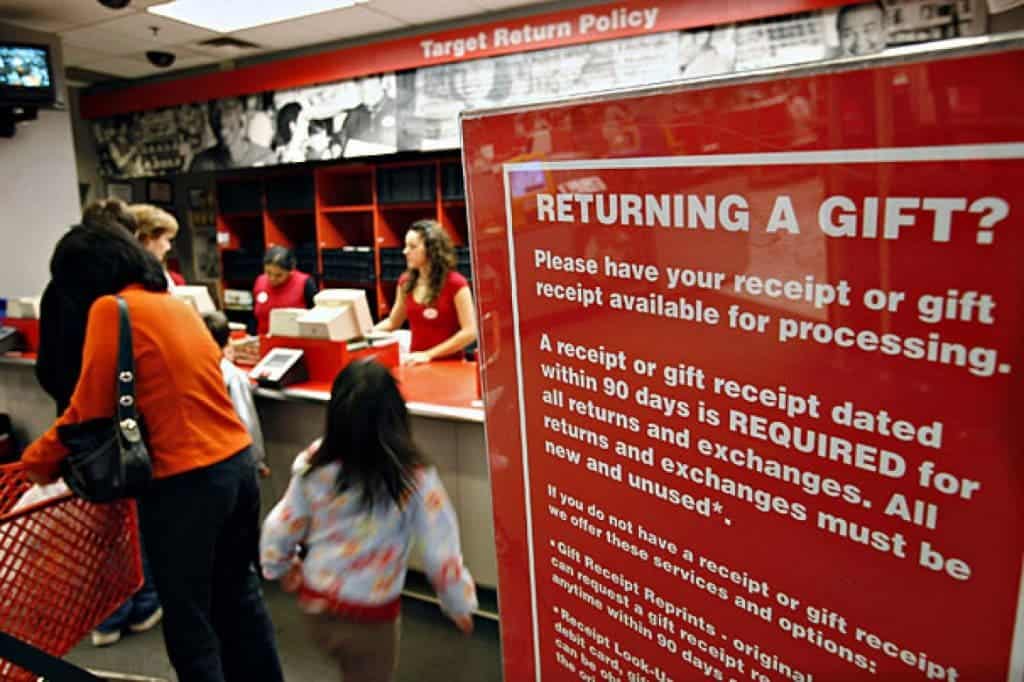Every January, retailers suffer great loses as millions decide to return oversized sweaters or waffle makers bought around Christmas. Americans returned about $284 billion in merchandise in 2014, according to the National Retail Federation — $70 billion over Christmas. That’s quite a sting, so nowadays the industry is very concerned with how to reduce losses from returns. This includes helping buyers make more informed decisions, but also optimize the process by finding out when and how people decide to return products. Oddly enough, one study found being more lenient with return deadlines actually reduced returns, not increased them. With this in mind, 90 days returns might be a lot more productive for retailers than the standard 30 or 60 most use.

Gifts are returned at the Target store in Edison, N.J. (Jeff Zelevansky/Bloomberg)
The team at University of Texas-Dallas performed a meta-analysis of 21 studies which gauged consumer behaviour, which together included 11,662 subjects. They identified several characteristics that influence returns: time (how long before the consumer can’t return the product), effort (no questions asked or tied to a heap of paper trail), exchange (money back or just store credit) and scope.
A lenient return policy (considering all characteristics) did involve more returns, but more sales. Add and substract, retailers made more money thanks to the boost in marketing and confidence.
The most striking finding was that people actually returned items less frequently when the return deadline was set higher. That’s counter-intuitive, but there are actually logical explanations the researchers note. One explanation is the “endowment effect,” which basically says people grow attached to products the longer they have them around. The waffle maker might seem sub-par in the first week, but by the time the 60 or 90 days return is set to expired it leveled up to “good enough”.
Overall, the researchers recommend retailers to increase the return deadline and make it easier for people to get their cash back. This will increase sales, though handing out cash for returns with no questions asked proved to be sub-optimal. Of course, different markets might respond differently.
“Depending on whether it’s a durable good or a consumable good, whether it’s high-fashion or fast-fashion, those different segments of the market have different reasons for buying and they have different concerns for risk and quality,” said lead author Ryan Freling for the Washing Post.
A deluge of returns can be expensive for retailers, and not just because they’ve lost the initial sale. They’re often footing the bill for return shipping. To re-sell the item, they might have to put it on the sale rack at a reduced price or take it into the secondary market. Then there’s the labor costs of re-packaging and so on. But you can’t have one without the order, as retailers know well.
“When we first started in e-commerce, the thinking was, ‘We’ll make it as hard as possible [to return] because then the sales will stick,’” said Maria Haggerty, chief executive of Dotcom Distribution, an e-commerce logistics company. “As e-commerce has evolved, the retailers have realized that customer acquisition is such a huge cost, that if you get one sale from them, you don’t want to lose them” with a frustrating return policy.
If you’re a retailer, small or big, make sure you have a good return policy. You’ll lose money, and you’ll get to deal with scammers but at least you’ll be earning better. It’s the bottom line that matters (hint: it should always be the freaking customer. In the end, it translates into money, too. Be smart).









